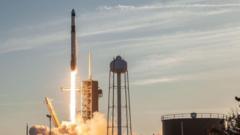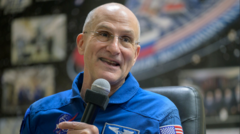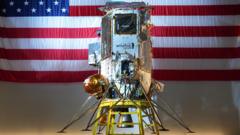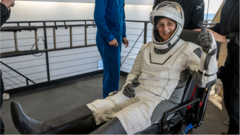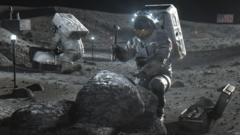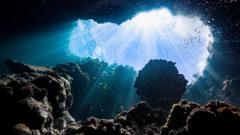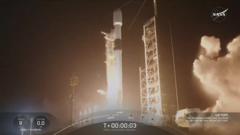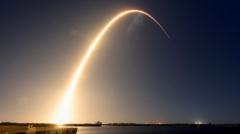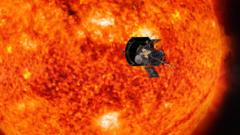In a groundbreaking achievement, the private spacecraft Blue Ghost has successfully landed on the Moon, making history as only the second commercial vehicle to touch the lunar surface. Launched by Firefly Aerospace on January 15, Blue Ghost embarked on a mission to explore the Sea of Crises, a prominent crater observable from Earth. This endeavor is part of a burgeoning partnership between NASA and private companies aimed at revitalizing lunar exploration.
Private Spacecraft Blue Ghost Makes Historic Lunar Landing
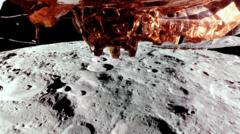
Private Spacecraft Blue Ghost Makes Historic Lunar Landing
Blue Ghost becomes the second commercial lunar lander to successfully reach the Moon, highlighting a new era of private space exploration.
While another private company, Intuitive Machines, is preparing to launch its Athena spacecraft to the Moon's south pole in the coming days, Blue Ghost's landing marks a significant accomplishment in commercial space travel. Intuitive Machines previously made history with its Odysseus spacecraft, which landed on the lunar surface in February last year, but the mission ended in failure when the lander toppled over due to a mishap.
Cheering erupted among Firefly staff in Texas upon receiving news of Blue Ghost's successful touchdown after two weeks of lunar orbit. Dr. Simeon Barber, a planetary science expert, emphasized the importance of this mission, asserting that it serves as a template for successful lunar landings, a skill that had dwindled since the Apollo missions. He stated, "By going to the Moon, we can learn how to run robotic instruments in space and weather the harsh conditions present on the lunar surface."
The renewed interest in moon landings is driven by the potential for private enterprises to lower costs and spur innovation in space technology. With Astrobotic Technology's recent failed attempt to land a lander on the Moon—resulting in a crash due to fuel issues—the stakes continue to rise in the race for lunar exploration.
Dr. Barber recalls that human landings ceased due to the prohibitive costs of the Apollo missions, which allowed astronauts to be on the Moon only briefly. He believes that private investment can significantly change this landscape and make sustainable lunar missions more feasible in the future, fostering advancements like resource extraction, including finding water on the Moon for astronauts' use.
The revival of lunar exploration through these commercial ventures suggests a new chapter in human spaceflight, promising innovative possibilities in our quest to understand and utilize the Moon beyond just a destination.
Finally, as Blue Ghost begins its exploration of the Sea of Crises, it serves as a beacon of hope for a more sustainable and innovative future in space exploration.
Cheering erupted among Firefly staff in Texas upon receiving news of Blue Ghost's successful touchdown after two weeks of lunar orbit. Dr. Simeon Barber, a planetary science expert, emphasized the importance of this mission, asserting that it serves as a template for successful lunar landings, a skill that had dwindled since the Apollo missions. He stated, "By going to the Moon, we can learn how to run robotic instruments in space and weather the harsh conditions present on the lunar surface."
The renewed interest in moon landings is driven by the potential for private enterprises to lower costs and spur innovation in space technology. With Astrobotic Technology's recent failed attempt to land a lander on the Moon—resulting in a crash due to fuel issues—the stakes continue to rise in the race for lunar exploration.
Dr. Barber recalls that human landings ceased due to the prohibitive costs of the Apollo missions, which allowed astronauts to be on the Moon only briefly. He believes that private investment can significantly change this landscape and make sustainable lunar missions more feasible in the future, fostering advancements like resource extraction, including finding water on the Moon for astronauts' use.
The revival of lunar exploration through these commercial ventures suggests a new chapter in human spaceflight, promising innovative possibilities in our quest to understand and utilize the Moon beyond just a destination.
Finally, as Blue Ghost begins its exploration of the Sea of Crises, it serves as a beacon of hope for a more sustainable and innovative future in space exploration.

